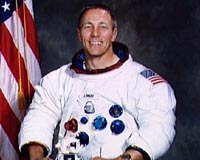 |
Paris, France (ESA) Sep 23, 2010 'Is there a doctor on the plane?' Piping this request over aircraft speakers is the traditional response to a potential onboard medical emergency. But now the availability of expert medical advice can be guaranteed every time. Etihad Airways, national carrier of the United Arab Emirates, is the latest airline to install the ESA-derived Tempus IC telemedicine system on its long-haul flights. ESA supported the development of the technology in collaboration with the UK manufacturer RDT. Already in service with numerous airlines, the briefcase-sized Tempus IC puts non-medical cabin crew in contact with ground-based experts during in-flight medical emergencies. Key information about the passenger's health can be quickly transmitted via satellite to a dedicated response centre. The same vital signs which are measured routinely in a hospital emergency room, including blood pressure and sugar levels, temperature and heart rate, are captured to a clinical level of quality. At the same time, the crew can also talk with the medical specialists and send them still and moving pictures of the situation. Imagine a long-haul flight passenger complaining of acute shoulder pain. He may just have strained his muscles lifting too much luggage - or he could be experiencing a heart attack. The Tempus IC system can transmit the passenger's electrocardiographic readings to the medical team, allowing them to rule out heart problems and preventing an emergency diversion costing many thousands of euros. "With the rise of larger aircraft and lower air fares, the number of people of all ages travelling by air is increasing," explained Graham Murphy, CEO of RDT. "As a result, the probability of a medical emergency occurring in flight has risen, and the pilot will often divert the flight to the nearest airport where medical attention can be provided. "Commercial airlines are interested in telemedicine to improve medical provision for customers as well as to support their staff and crew. "In simple terms, better diagnosis directly benefits the airline and its passengers." Telemedicine originally emerged as a means of dealing with astronaut medical emergencies during long-duration space missions. ESA's telecommunications engineers collaborated with RDT over a three-year period to develop and test Tempus IC. "With the emergence of ultra long-haul aircraft such as the A380, this kind of technology is really the only way forward to contain the component of risk that an in-flight medical incident presents," said Pierluigi Mancini of ESA's Integrated Application Promotion programme. "The combination of medical data with the ability to actually see and talk to a patient and crew is a real breakthrough. "ESA has been active in the field of satellite-delivered telemedicine for a number of years. By investing in new applications, ESA is a catalyst for European industry to develop and exploit innovative services and markets while, at the same time, fostering and organising user demand to give the critical mass necessary to sustain those services."
Share This Article With Planet Earth
Related Links Etihad Airways Space Medicine Technology and Systems
 Astronauts' brains 'tricked' for training
Astronauts' brains 'tricked' for trainingHouston (UPI) Aug 24, 2010 U.S. scientists say they can trick the brains of astronauts to simulate the dizzying effects experienced when returning to Earth after a long period in space. A research group at the National Space Biomedical Research Institute has developed a Galvanic vestibular stimulation system that safely induces the sensory and mobility disturbances commonly experienced by astronauts returning to ... read more |
|
| The content herein, unless otherwise known to be public domain, are Copyright 1995-2010 - SpaceDaily. AFP and UPI Wire Stories are copyright Agence France-Presse and United Press International. ESA Portal Reports are copyright European Space Agency. All NASA sourced material is public domain. Additional copyrights may apply in whole or part to other bona fide parties. Advertising does not imply endorsement,agreement or approval of any opinions, statements or information provided by SpaceDaily on any Web page published or hosted by SpaceDaily. Privacy Statement |